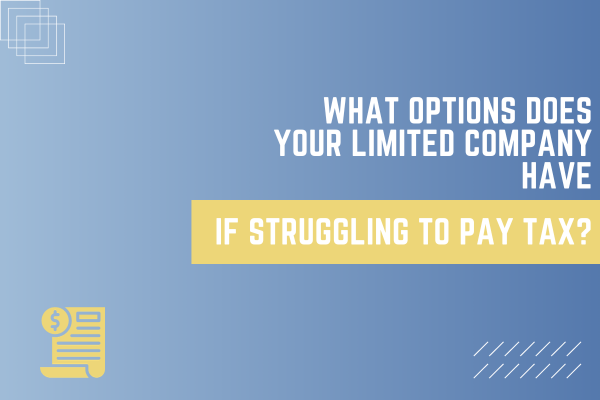- 01253 731791
- 9AM - 5PM Mon - Fri
- Bank House, 9 Dicconson Terrace, Lytham St Annes, FY8 5JY
Struggling to pay taxes can be an insidious financial issue for a limited company to deal with. This is because HMRC has the power to forcibly close down businesses that are behind with their tax payments if they believe they’re insolvent.
The best course of action if you’re having trouble paying your business tax bills is to get in touch with HMRC at the earliest opportunity. This shows that you aren’t deliberately trying to evade your tax liabilities but are experiencing temporary financial trouble.
This can lead to a better outcome for your business as HMRC may be more willing to negotiate an instalment plan for the arrears. So what potential options does your company have in this situation?
HMRC Time to Pay (TTP) arrangement
HMRC’s Time to Pay scheme involves paying your tax arrears in instalments, typically over 3-6 months. This is invaluable when you need a little financial breathing space without the threat of HMRC penalties and interest.
The terms of a Time to Pay arrangement are negotiated with HMRC, and although 3-6 months is a common term for an arrangement it may be possible to negotiate for up to 18 months or more additional time.
A Time to Pay arrangement involves paying a fixed amount over the term, but to be eligible you must also be able to pay your current tax liability. When presenting your case for extra time, HMRC will require supporting documents.
These typically include sales and cash flow forecasts and a business plan that explains how you’ll free up the money needed to pay each month.
Alternative finance
Alternative financing can protect your company from HMRC enforcement action by providing the additional cash flow you need. Invoice finance is just one potential option and offers regular cash injections using the value of your unpaid invoices.
This may be sufficient to stabilise your finances and release the working capital needed to repay any tax arrears. What happens if your business is in severe financial distress, however, and cannot recover?
Voluntary insolvent liquidation
Creditors’ Voluntary Liquidation (CVL) is a formal procedure that deals with unmanageable financial decline and allows you to meet all the statutory requirements for closing an insolvent limited company.
CVL can offer you a safe exit from the risks of running a company that cannot pay its creditors, whilst still retaining a degree of control over the process. As a director, you can decide when to place the company into liquidation and also appoint a liquidator of your choice.
The office-holder then realises any business assets, distributes the proceeds amongst creditors as required under insolvency law, and closes the business down by striking its name off the Companies House register.
Although an investigation into why the business was insolvent does take place, the fact that you’ve voluntarily entered liquidation minimises the likelihood of misconduct allegations being made against you.
CVL prioritises creditors as required by law but it can also benefit you as a director if you’re eligible to claim director redundancy. If the business has been incorporated for two years or more and you’ve received a regular salary under PAYE, you may be able to claim and use the money to pay the professional fees associated with CVL.
If your company is struggling to pay its taxes these supportive options may help. They provide a means to repay your arrears and stay up-to-date with current tax liabilities, or to close down the business in an orderly manner if it’s no longer viable.
About the author – Shaun Barton is a partner at Company Closure and boasts a wealth of experience in helping directors of distressed companies understand their options. A director-facing adviser, Shaun is often the first point of contact for business owners in financial distress, consistently delivering expert advice when it is needed the most.


